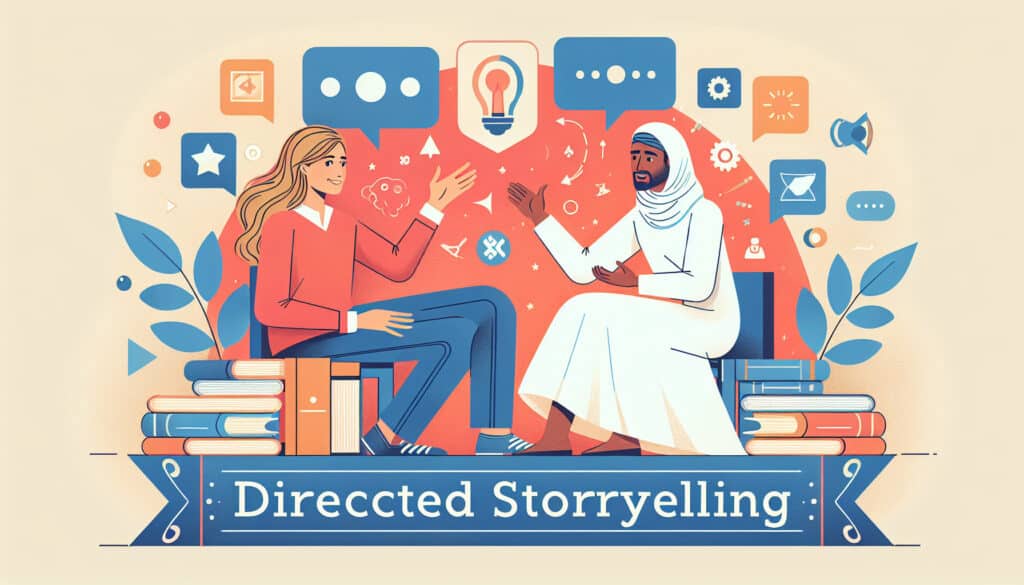A user research technique where an interviewer asks participants to tell stories about specific past experiences related to the research topic.
- 方法: 工程, 质量
导演讲故事

导演讲故事
- 客户体验, 客户旅程制图, Human-Centered Design, 创新, 研究与开发, Storyboarding, 用户体验(UX), 以使用者為中心的設計
目标
如何使用
- Rather than asking direct questions, the researcher provides prompts or themes (e.g., 'Tell me about a time you had trouble finding a product') to encourage the user to share rich, contextual stories.
优点
- Elicits rich, qualitative data and uncovers latent needs and motivations; helps to understand the user's context and emotional journey; stories are more memorable and engaging than simple answers.
缺点
- The interviewer's prompts can unintentionally lead or bias the participant's story; relies on the participant's ability to recall and articulate their experiences.
类别
- 客户与营销, 构思, 产品设计
最适合:
- Gathering rich, contextual user insights by prompting participants to share specific stories about their past experiences.
Directed storytelling is particularly effective in product design and innovation phases where deep understanding of user behavior and emotional factors influences design decisions. This methodology finds its application in sectors such as consumer electronics, automotive design, healthcare products, and software development, where empathy-driven design is paramount. During early stages of a project, designers, researchers, and product managers often initiate these sessions to gather detailed user narratives that reveal unmet needs or frustrations that quantitative methods might overlook. Participants in these sessions typically include end-users, stakeholders, and even representatives from marketing and sales to provide a rounded perspective on user experiences. For instance, in the development of a new 可穿戴 health device, directed storytelling can yield insights into consumers’ past challenges with similar products, informing features that cater to their emotional and practical requirements. By sharing their stories in response to thoughtfully crafted prompts, users can articulate their feelings and contexts in an organic manner, facilitating a deeper connection to the problems to solve, thereby inspiring innovative solutions in design and functionality that resonate with real-world usage. This exploration often leads to identifying unexpected barriers to adoption and can serve as a catalyst for iterative design processes. Using directed storytelling can significantly enhance user experience strategies, making designers more adept at creating solutions that align closely with user expectations and lifestyle.
该方法的关键步骤
- Introduce prompts or themes relevant to the specific context of the discussion.
- Encourage participants to share personal stories related to the prompts.
- Utilize active listening techniques to engage with participants' narratives.
- Ask follow-up questions that dig deeper into emotional and contextual aspects of the stories.
- Facilitate a discussion that allows for the exploration of multiple stories from various participants.
- Capture notable moments and unique insights from the shared stories for further analysis.
专业提示
- Prioritize narrative diversity by encouraging participants to share stories across various contexts or roles they have occupied, enriching the data set.
- Utilize visual aids, such as storyboards or product prototypes, to facilitate more vivid storytelling and draw out specific user experiences.
- Implement follow-up prompts that dig deeper into emotional responses within the stories, revealing underlying motivations and unmet needs.
历史背景
1960
1980
1983
1990
1995
2000
2010
1950
1980
1980
1986
1994
1995
2000
(如果日期不详或不相关,例如 "流体力学",则对其显著出现的时间作了四舍五入的估计)。














相关文章
主生产计划(MPS)
大规模定制
营销漏斗
营销审计
MAPO 指数(医院病人的移动和援助)
制造资源计划(MRP II)